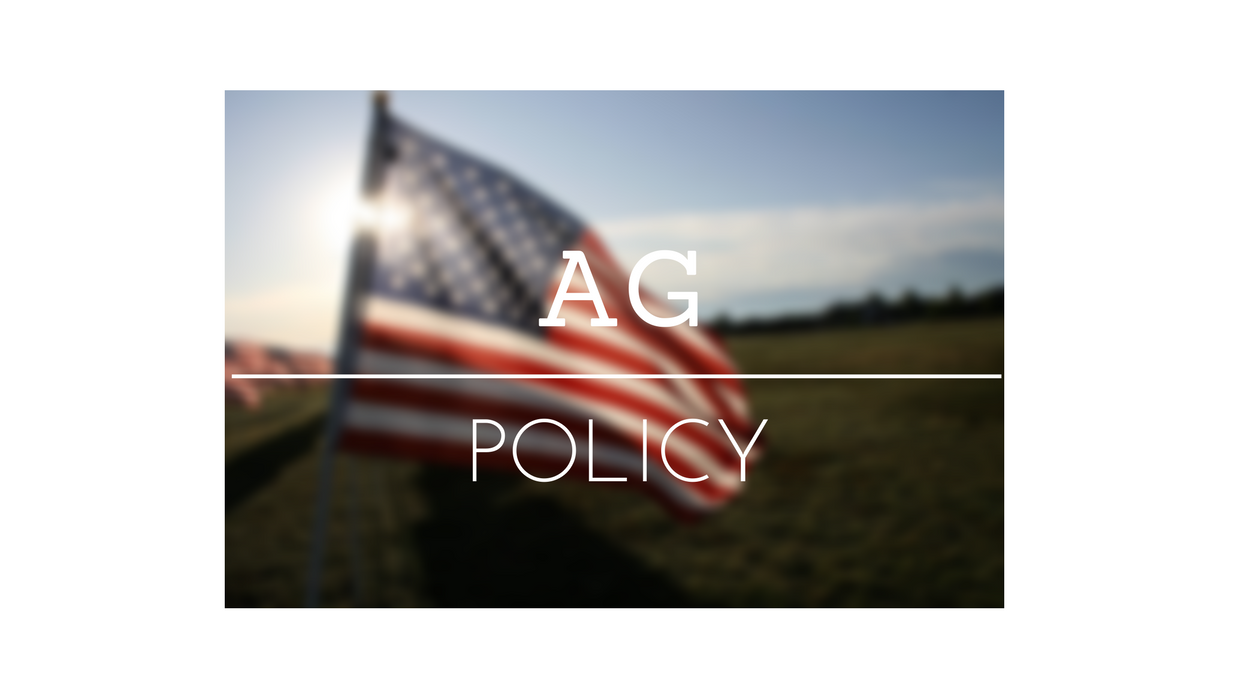On Aug. 17, Congresswoman Vicky Hartzler, R-MO, and Rep. Tracey Mann, R-KS, led 92 of their House colleagues, most from farm states, in pushing back on the Environmental Protection Agency’s recent proposed revisions to the interim decision for atrazine, a crop protection tool described as “critical.”
The letter was responding to the June 30 publication of the announced rule revision for the registration for atrazine, which the letter calls “a well-studied herbicide essential to farming.” Atrazine is an herbicide used since 1958 to protect corn, sorghum, sugarcane, and a variety of other crops from weeds. It is the second-most-used agricultural herbicide after glyphosate, according to the Center for Food Safety, and one of the most documented.
The proposed revisions to the previous atrazine decision include new labeling and mitigation requirements. The EPA wants to reduce the aquatic ecosystem CE-LOC from 15 parts per billion to 3.4 ppb, a decision that critics claim was based on “invalid studies and questionable conclusions.” The new mitigation rules would also prohibit applying atrazine during rain or when soils are saturated.
The letter is supported by the American Farm Bureau Federation, National Corn Growers’ Association, American Sugar Cane League, Florida Sugar Cane League, Rio Grande Valley Sugar Growers, Kansas Grain Sorghum, Kansas Corn Growers Association, Kansas Farm Bureau, and Minnesota Crop Production Retailers.
In the letter, the signers wrote:
“We are alarmed by the agency’s departure from sound science by changing the concentration equivalent level of concern, and also with the mitigation measures in the proposed revisions. We know that the EPA asked the United States Department of Agriculture to consult on a proposed ‘pick list’ of mitigation measures a producer would be required to implement when using atrazine; however, it is abundantly clear that the EPA did not incorporate any of USDA’s feedback in these revisions.”
“This change contradicts previous scientific evidence and will have widespread impacts on the use and effectiveness for atrazine,” according to the letter-signers. “In addition, the EPA proposed an unworkable list of mitigation measures that producers would be required to implement when using atrazine.”
Atrazine’s mode of action is to interfere with photosynthesis, causing plants to dry up and die. Products containing atrazine, of which there are currently about 300, are commonly used on corn, sorghum, sugarcane, macadamia nuts, guava and wheat stubble after harvest. They can be used as granules, liquids, concentrates or ready-to-use sprays.
Atrazine’s direct toxicity to humans is low at normal exposure doses, according to the National Pesticide Information Center. It causes mild symptoms and it is quickly excreted. It is not a carcinogen, the NPIC says, and is not known to cause gene damage. After rats ate atrazine, about 95% of the dose was gone from their bodies within seven days.
But it caused liver damage and reduced offspring, as it did also in rabbits, the critics contend. Researchers using Agricultural Health Study data found that people who had been exposed to more atrazine had a higher risk of end-stage renal disease (kidney failure) compared to people who had not been exposed. As atrazine use increased, risk of end-stage renal disease also increased.
Atrazine is broken down slowly by water, sunlight, and micro-organisms. Without oxygen, it has a half-life of about 578 days in water, or 168 days in water exposed to sunlight. It can be very toxic to aquatic marine invertebrates, however, and can reduce hatchlings among waterfowl.
The CFS, which filed public comments on atrazine, describes it as “an extremely potent endocrine-disrupting compound that exerts profound effects on humans, plants, animals and ecosystem health at vanishingly small concentrations measured in the parts per billion and even parts per trillion.” The CFS claims that EPA has previously ignored peer-reviewed literature, “in particular the evaluation of epidemiological studies related to atrazine and atrazine’s carcinogenic potential,” and relied instead on industry-sponsored studies of atrazine’s health risks that it describes as flawed.
According to the CFS, EPA relies heavily on the use of a standard called Good Laboratory Practices as a “false marker of scientific quality,” because GLP standards “are mostly procedural and record-keeping requirements that were first instituted by federal agencies in response to massive fraud on the part of private testing firms conducting studies on behalf of corporate clients seeking regulatory approval of their products.” The CFS prefers peer review as a guardrail.
Upping the ante, CFS is now urging a complete ban on atrazine, citing its effects on amphibians and fish. Information is available at https://action.centerforfoodsafety.org/a/atrazine-22.
The NCGA encourages producers to write comments to the EPA and they can do so by the comment deadline of Oct. 7 by visiting the NCGA website at ncga.com/take-action/become-an-advocate/take-action.
David Murray can be reached at [email protected].



